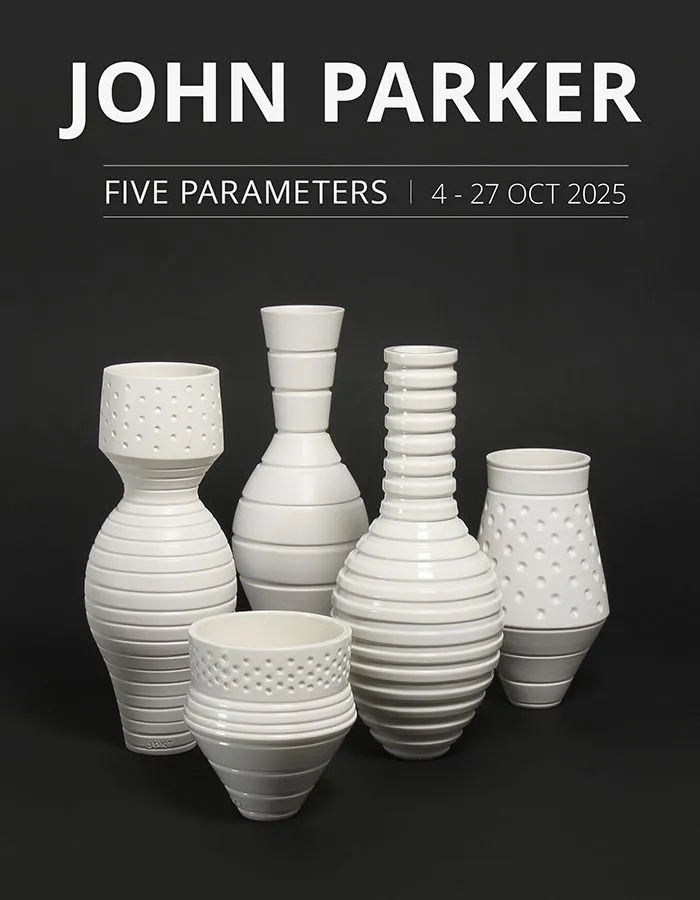John Parker: Five Parameters (2025)
Closes
Oct 27, 2025Posted on
Sep 25, 2025Event type:
Art , Craft , Exhibition , Public Art , Public Program ,Price:
FreeVenue:
Milford GalleriesAddress:
18 Dowling Street, DunedinRegion:
Dunedin , National , Online , Otago ,
John Parker is one of New Zealand's most celebrated ceramicists, working in a sleek yet austere style inspired by sources ranging from cinema and theatre to industrial and commercial ceramics and early 20th-century art. Despite the works' cool modernity, there is a rebellious playfulness and distinctive perspective which put Parker's exploration of pure form in a class of one within New Zealand ceramics.
The artist's work within the world of theatre allows Parker to see his pieces as actors on a stage, each with its own character and presence, and informed by the effects of lighting, juxtaposition, and surface.
Often, the artist uses a minimal range of colours, or — as in the current exhibition — restricts himself to a single solid colour, thereby placing form and texture front and centre. The artist understands the romance of surface and form; his surfaces become the sensual cosmetics and fashion accoutrements with which the objects seduce their audience.
In the creation of a body of work, Parker deliberately sets himself strict parameters. This is a double-edged sword — the artist is in part guided by his choices in his creative effort, but is also faced with stringencies which dictate his output. There is a challenge in considering how to work and how this will affect his ceramics. In the artist's words, his work "involves the permutations and combinations of manipulating the five variables".1 In this instance, those parameters are a clay body, a single matt white and a single gloss white glaze, and two forms of decoration: linear grooves and drilled spots.
The pieces which, as their titles suggest, are utilitarian, are explorations of form and also of the limitations of the material within these parameters. The indentations of the decoration in works such as Gloss White Grooved Bottle, for instance, require a thickness of clay that demands great technical expertise to successfully achieve.
Parker's ceramics are all hand-formed, yet the artist deliberately works to reduce the signs of human interaction. The vessels have the suppressed power of factory-created pieces while being totally manually created, an indication of the artist's superb abilities and precision.
Despite this, the artist sees his work as an extension of the traditions of craft pottery, with each piece hand-made and unique, but couched within the minimalist ethos of art styles such as the Bauhaus and de Stijl.2
The reduction of the organic and coloured elements of the works forces us to assess the works on its merits as a pure art object. We are impelled to regard the works and their skilful creation without distraction. The forms and decorative elements take centre stage, as do the surface texture and sheen. The interplay of different patterns on Matt White Grooved Spotted Vessel, the differing surfaces of the matt and gloss works, and the perfection of the shapes of the works rightfully come to the fore.
1. Correspondence with the artist, September 2025.
2. John Parker, Artist Statement, 2000.